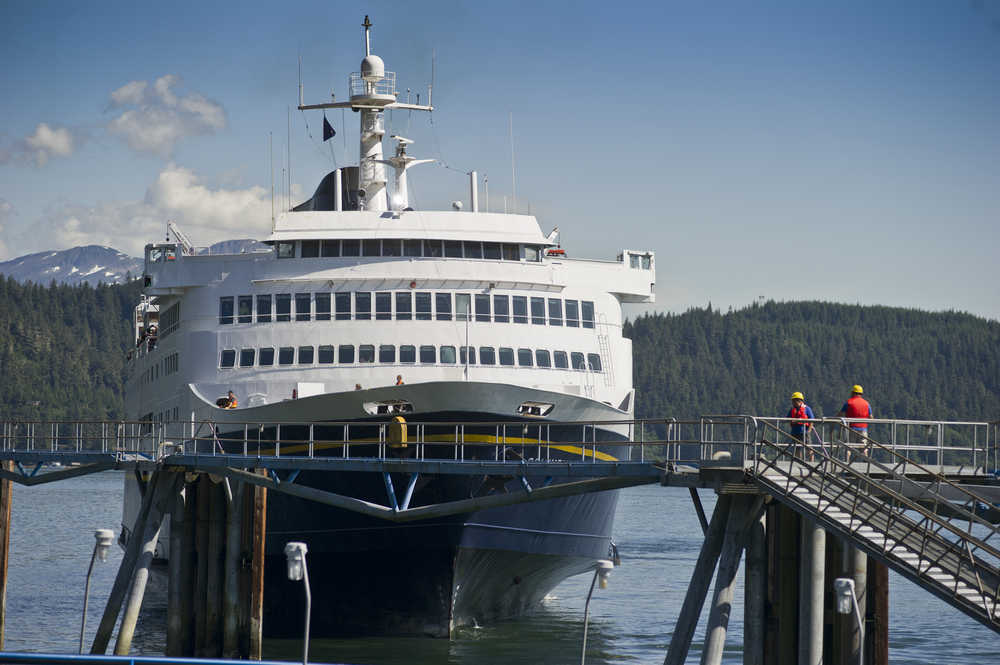A new report commissioned by Southeast Conference recommends that the Alaska Marine Highway System become a state-backed corporation semi-independent of government.
The report’s draft recommendations were presented to the state’s Marine Transportation Advisory Board, which met in teleconference Monday.
“Our recommendations were to basically move the Marine Highway system’s operations toward a public corporation model,” said John Waterhouse of Elliott Bay Design Group, which was hired to create the report.
The proposal is not privatization; rather, it suggests the ferry system run similarly to the Alaska Railroad.
Speaking to the advisory board, Waterhouse said making Alaska’s ferry system an independent corporation would allow it “the flexibility and tools to manage their own cost centers.”
The system would also be able to negotiate directly with unions and employees, rather than working through other state agencies.
“Right now, labor is being handled by the Department of Administration. We believe that the Marine Highway System needs to be working directly with their unions and their bargaining units,” Waterhouse said.
Before making its recommendation, Elliott Bay analyzed six different approaches and took lessons from British Columbia’s ferry system, the system in Massachusetts, and the system of Scotland.
The project also gathered information at a statewide summit, online, from municipal governments and at Southeast Conference.
Board member Greg Wakefield asked Waterhouse how this new idea would address the ferry system’s principal problem: rising costs and flat revenue.
“The real message is that the Marine Highway System failed its riders by not having regular fare increases over the past 20 years, because every other transportation business had to do that,” Waterhouse said.
The report recommends the state continue to own the ferry system’s boats and terminals to ensure continued access to federal funding for transportation.
It also recommends a second phase of planning that would determine how to execute the transition to a public corporation. In the meantime, the report recommends the state forward-fund the ferry system, give it direct control of labor negotiations, and allow it more control of fares.
Columbia damage extensive
The ferry Columbia, taken out of service in September due to propeller damage, will not return to operation until April, said Department of Transportation and Public Facilities Deputy Commissioner Mike Neussl.
Neussl told the advisory board that a shattered propeller contaminated the variable pitch gearing that controls the prop.
“There’s a pretty major repair effort underway on that,” he said.
Meanwhile, the ferry Malaspina has had its overhaul extended as engineers discovered a significant amount of wasted steel.
“That vessel will not come out of overhaul until January,” Neussl said.
To compensate, the ferry Kennicott will stay on the route between Southeast and Bellingham, Washington.
Alaska-class ferry work progressing
The first half of the Alaska-class ferry Tazlina was rolled out of the enclosed Vigor Shipyard facility Sunday, manager Doug Ward told the advisory board.
The Tazlina and its sister ship, the Hubbard, are being built in modules and halves. There are 14 modules in the first half and eight in the second half.
Ward said the first half has been protected with temporary weatherproof bulkheads, allowing work to continue outside while the second half is built indoors.
Neussl said the Tazlina is ahead of schedule, with expected delivery in December 2017 or January 2018. The Hubbard is roughly four and a half months behind schedule, with delivery now expected in early 2019.
He added that during the contracting process, “there were concessions made on state furnished equipment,” and the ferry system is now trying to find money for that equipment.
The ferry system is also trying to obtain a waiver from the state’s “1 percent for art” program, which would otherwise require the ferry system to spend $1.01 million to decorate the two vessels.
“That seems like an excessive amount to be expended on art,” Neussl said.
He also concluded that the two ferries will not be alone in Lynn Canal when they begin operating.
“I think mainliners are still going to run up Lynn Canal, at least initially,” he said.

